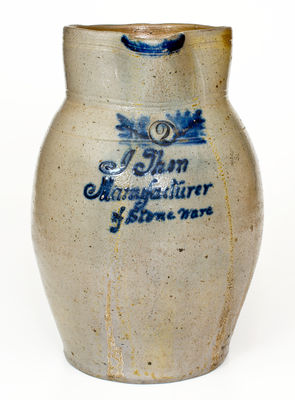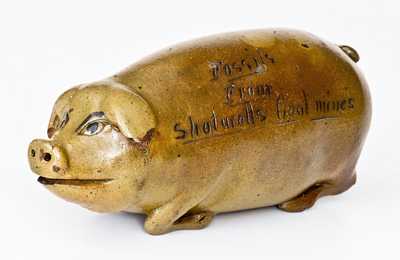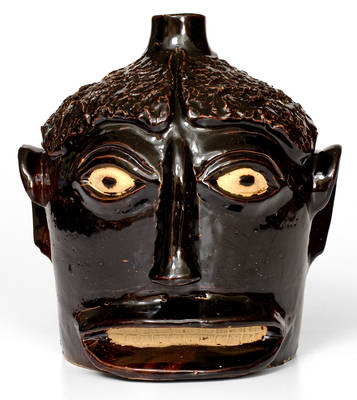Possibly Unique Lead-and-Manganese-Glazed Redware Tea Canister, Inscribed "Mistress Harmitage / her Cannister / Made By Philip / Anthony 1795", Kentucky origin, 1795, wheel-thrown form modeled with six paneled sides and circular spout, incised in ornamental script "Mistress Harmitage / her Cannister" on one panel, and on the opposing panel, "Made By Philip / Anthony 1795", the date surrounded by a wavy cartouche. Surface covered in a mottled lead-and-manganese glaze and decorated on two panels with later oil-painted seascape and winter scenes. This canister exhibits a fine, thin-walled construction with a slightly-recessed underside and whittling marks to the spout, evidence that the spout was modified along with the walls of the vessel after being removed from the wheel. This recently-surfaced work is distinguished as one of the earliest dated ceramic objects of Southern manufacture known. Comparison of the signature of Philip Anthony with a period document helps to verify the exact identity of its maker. According to Tennessee Potteries, Pots, and Potters by Samuel D. Smith and Stephen T. Rogers, Anthony, who would later found his long-standing pottery in Nashville, began his career in Bardstown, Nelson County, Kentucky, appearing there by 1800. This piece was made by Anthony when he was about 21 years of age. Coupled with the rarity of its maker and period of production is its form. While a popular form in finer, imported ceramics, few American redware tea canisters are known. The 18th century age and Southern origin of this object classify it as an important new discovery in American utilitarian pottery. Provenance: Ex-Clark Garrett. Very nice condition with some old, expected wear to spout, which has smoothed with age, and wear along edges. H 6 1/2".

















